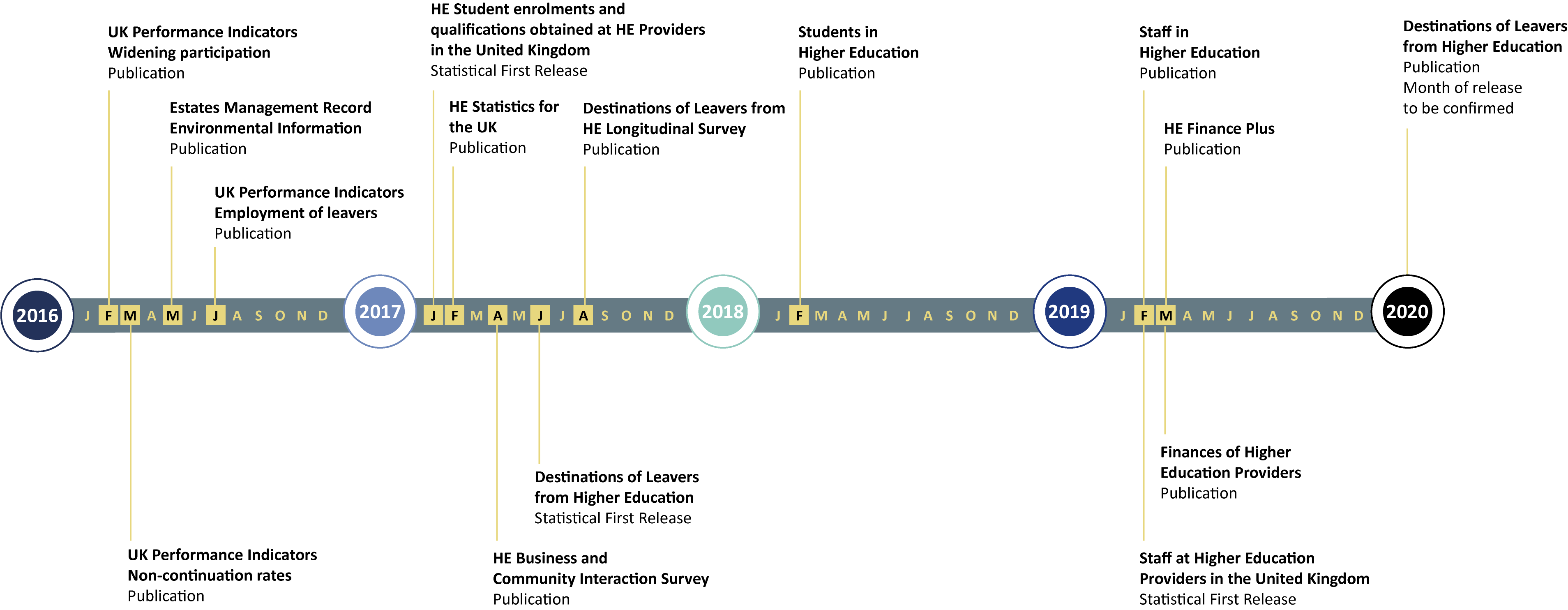HE Student data is latest HESA open data
Thursday 8 February sees the launch of HESA’s newly-redesigned Higher Education (HE) Student data. It’s also a significant milestone in the implementation of our five-year Open Data Strategy to 2021, as we deliver open data from one of our most widely-used data streams. Since January 2016, our open data journey has seen 12 of our data products evolve to free of charge publications under an Open Data licence, so removing any barriers to re-use.
![]()
However, maximising scope for re-use is not just about rights and permissions, it is also about delivering data using toolsets and formats that enable our users to readily utilise our data whatever their level of expertise and whatever tools they have available. We have worked extensively with the Open Data Institute (ODI) to explore open data formats, and particularly to make our published data more ‘machine-readable’.
The student data incorporates what we have learned from the ODI and includes functionality to access and download the underlying data across all sections, for those with the skills to use it. But we have also thought long and hard about making the data more accessible and comprehensible to those with less data expertise, and this is reflected in an entirely new structure and navigation route.
Machine-readable, filterable, interactive charts and tables replace static Excel tables, to enable better exploration of the data.
In place of the index of table titles that previously greeted our users an opening page structures content around intuitive icons and the types of questions that users may typically wish to ask, such as Who’s studying in HE?, Where do they come from?, Where do they study?. The questions determine the route through which a user can start to explore the information. Previous dense sets of large Excel tables have given way to interactive charts and tables which users can adjust to focus on particular sub-sets of students, subjects or HE providers. Signposting is used extensively to point to other sources of data when users are interested in more detail.
If you are a seasoned HESA data user and are worried about the new navigational structure then fear not - we have also included a traditional index of tables so you can go straight to the ones you need.
What was previously a single page of data definitions now comes augmented with key definitions that are embedded alongside the charts and tables, picking up on the key aspects that are relevant. We used to joke that we hadn’t yet invented the technology that could make people read definitions, but we hope that this change will make them more accessible and attractive to read.
For the more technically-minded, each chart or table provides buttons or links to enable users to download the data. This functionality builds upon data download approaches delivered in the past two HESA Statistical First Releases (SFRs).
Following feedback from users, we now offer two different types of download – one that provides access to the underlying data in a format suitable for re-use in analytical software, and one that allows users to simply download a copy of the table as shown on the web-page in comma separated values (CSV) format. Some users had lamented the loss of Excel tables in the SFRs, so this new functionality supports easy use of tables in Excel whilst ensuring we are using an appropriate open data format and not a proprietary one.

The timeline of HESA's Open Data strategy showing the roll-out of some of the open data publications since January 2016, and the releases that will be available free of charge by 2021.
Now it’s over to you! We're looking forward to hearing what you think of this new open data release. What do you like? What don’t you like? How can we improve it further? Our ambition is to publish flexible and innovative open data that surpasses expectations but we can only do that by working with you, our data users. We are ready and listening!
Go to the HE Student data 2016/17
Download HESA’s Open Data Strategy 2017-2021

Jonathan Waller
